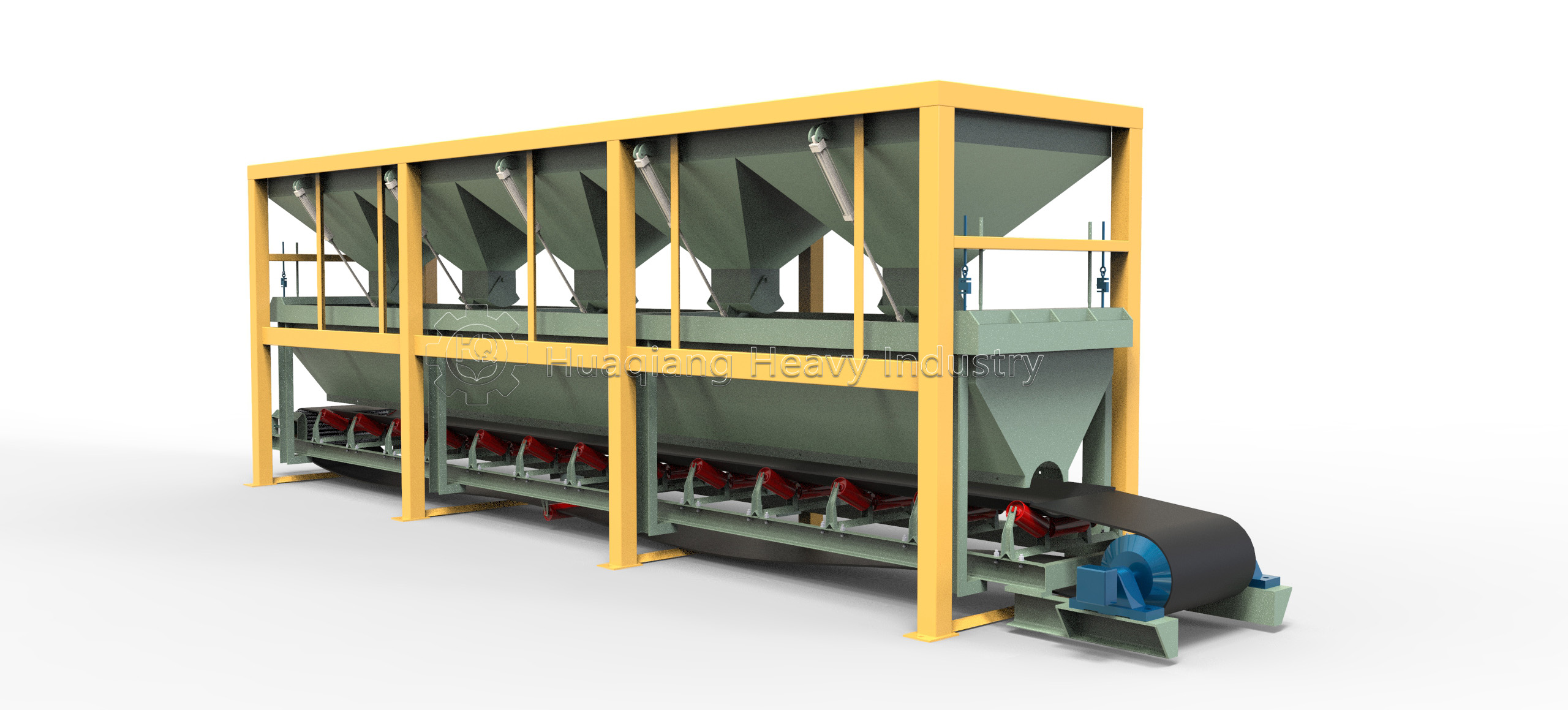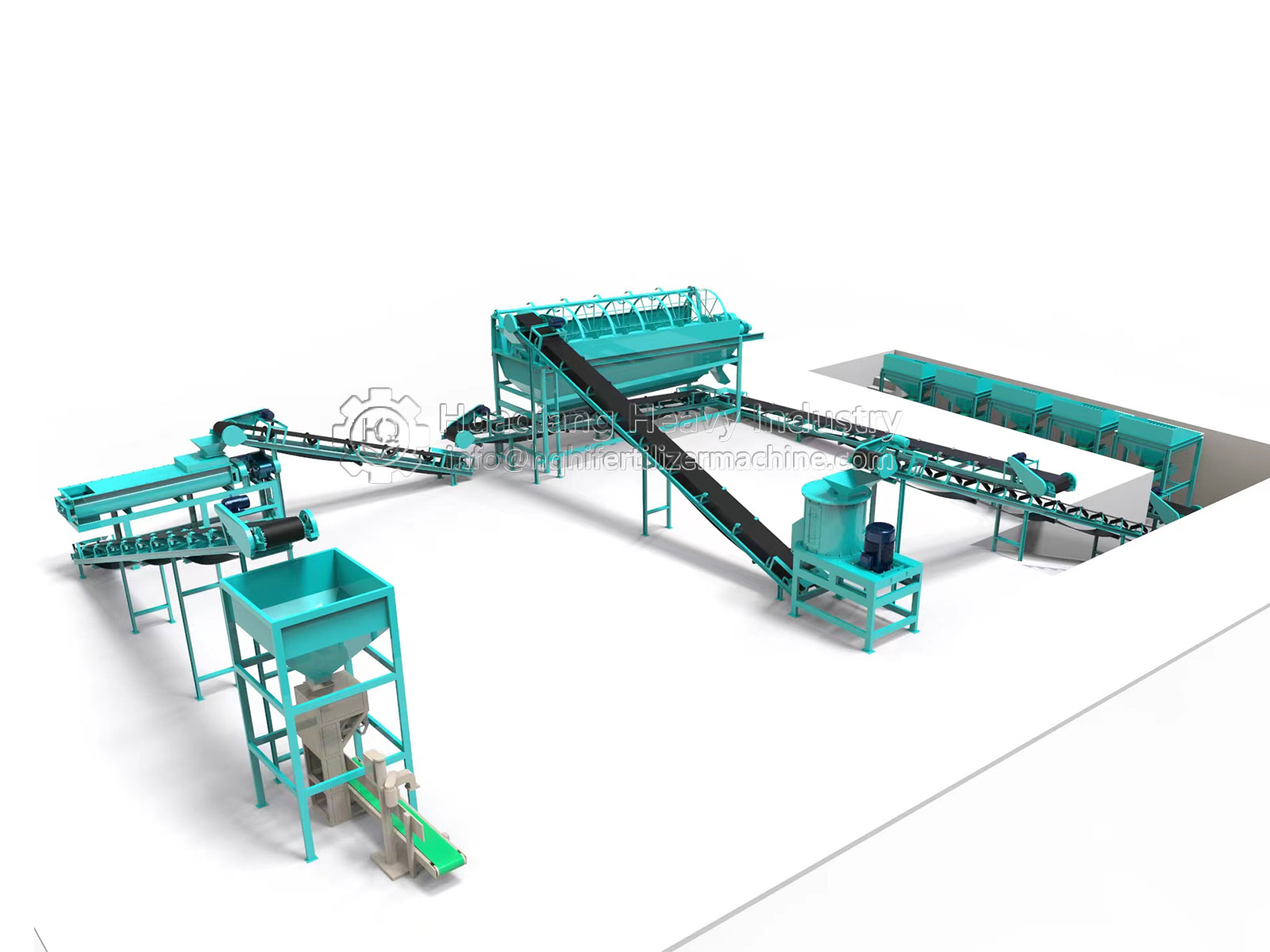In modern fertilizer production, precise batching systems are crucial for ensuring product quality and production efficiency. With growing agricultural demands and technological advancements, fertilizer batching systems have evolved from traditional manual operations to highly automated precision systems. Among these, the multi-bin single-scale batching system plays an increasingly important role in fertilizer production lines due to its unique advantages.
What is a Multi-Bin Single-Scale Batching System?
The multi-bin single-scale batching system is an advanced automated batching solution consisting of multiple raw material bins (typically 5-12) and a central weighing device. Each material bin is connected to the central weighing scale via a screw conveyor or vibrating feeder, with the system precisely controlling the ratio and feeding sequence of various materials through a PLC (Programmable Logic Controller).
Functions and Application Scenarios
This system is primarily used for precise batching in the production of compound fertilizers, organic fertilizers, and BB fertilizers. Its main functions include:
- Achieving precise ratios of various raw materials to ensure product consistency
- Improving production efficiency by reducing manual intervention
- Reducing material waste and saving production costs
- Providing production data recording for quality traceability
The multi-bin single-scale system is particularly suitable for the following scenarios:
| Application Scenario | Advantages |
| Small to medium fertilizer production lines | Moderate investment with high cost-effectiveness |
| Production with frequent formula changes | Easy material changeover and strong adaptability |
| Compound fertilizer production with multiple raw materials | Capable of handling multiple materials simultaneously |
| Production requiring high batching accuracy | Single-scale structure reduces cumulative errors |
Role in Fertilizer Production Lines
The multi-bin single-scale batching system is typically located at the beginning of the fertilizer production line, serving as a critical component that determines final product quality. It receives various base fertilizers (such as urea, ammonium phosphate, potash, etc.) and trace elements from raw material bins, precisely batches them according to preset formulas, and then conveys the mixture to subsequent processes like mixing, granulation, and drying.
Fertilizer production flow chart with multi-bin single-scale batching system
Advantages and Limitations
Advantages:
- High precision:Single-scale structure avoids cumulative errors found in multi-scale systems, with batching accuracy typically reaching ±0.2%
- Flexibility:Easy formula adjustment, suitable for small-batch, multi-variety production
- Cost-effectiveness:Lower investment and simpler maintenance compared to multi-scale systems
- Space efficiency:Compact structure suitable for plants with limited space
Limitations:
- Capacity limitations:Single-scale structure results in slower batching speed than parallel multi-scale systems
- Material limitations:Not suitable for highly viscous or poorly flowing materials
- Cross-contamination:Minor residue may occur when changing materials
With the development of intelligent control technologies, modern multi-bin single-scale systems have improved batching speed through optimized algorithms, with some models achieving production capacities of 10-15 tons/hour, meeting the needs of most small and medium-sized fertilizer plants [1].
Conclusion
The multi-bin single-scale batching system, with its precision, flexibility, and cost advantages, has become an ideal choice for small and medium-sized fertilizer producers. Although it has certain capacity limitations, continuous technological innovations and system optimizations are constantly pushing its performance boundaries. For fertilizer manufacturers seeking to balance quality, efficiency, and investment, the multi-bin single-scale system offers a reliable solution.
[1] Zhang Mingyuan. Modern Fertilizer Production Technology and Equipment. Beijing: Chemical Industry Press, 2020.




